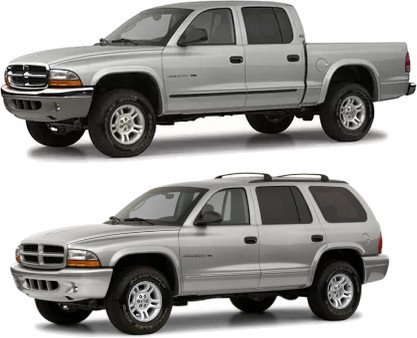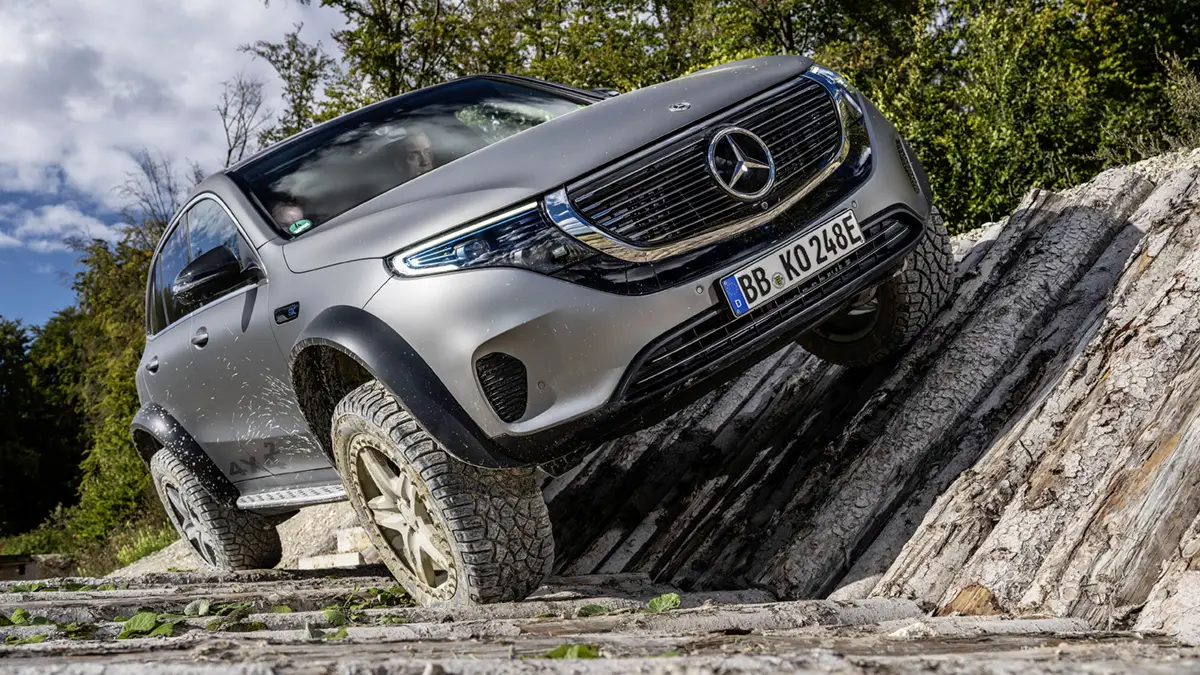For outdoor enthusiasts and adventurers, a 4×4 SUV is more than just a vehicle; it’s a gateway to exploration and rugged escapades. But what exactly does “4×4” mean in the context of SUVs, and why is it such a crucial feature for those seeking off-road thrills? In this comprehensive guide, we’ll delve into the intricacies of 4×4 systems, explore their benefits, debunk common misconceptions, highlight popular models, and offer essential maintenance tips for keeping your 4×4 SUV running smoothly.
Understanding the Term “4×4”
At its core, “4×4” denotes a four-wheel drive system where engine power is distributed to all four wheels of the vehicle simultaneously. Unlike standard two-wheel drive vehicles, where either the front or rear wheels receive power, 4×4 SUVs harness the collective strength of all four wheels to tackle challenging terrains with unparalleled traction and control.
The term “4×4” itself is quite straightforward: the “4” signifies the presence of four driving wheels, while the “x4” denotes the total number of wheels on the vehicle – two driving wheels in the front and two in the rear.
How 4×4 Works in SUVs
4×4 systems operate by sending power to all four wheels, enabling them to work together to navigate low-traction conditions such as snow, mud, loose dirt, or gravel. By distributing power across multiple wheels, 4×4 systems excel in traversing off-road trails and terrains that would challenge conventional vehicles, providing drivers with enhanced traction and stability.
In addition to improved traction, 4×4 systems enhance control and stability by allowing wheels to compensate for any loss of traction. This capability is particularly advantageous when traversing uneven or slippery surfaces, empowering drivers to maintain command of their vehicles even in the most challenging environments.
Benefits of 4×4 in SUVs
For outdoor enthusiasts and adventurers, the benefits of a 4×4 SUV are manifold:
- Unmatched Off-Road Capability: 4×4 systems enable SUVs to conquer rugged terrains, including rocky trails, steep inclines, and deep snow, opening up a world of off-road adventures.
- Enhanced Traction and Control: By powering all four wheels simultaneously, 4×4 systems provide superior traction and stability, allowing drivers to navigate low-grip conditions with confidence.
- Versatility: Whether tackling challenging off-road trails or traversing slippery roads, 4×4 SUVs offer versatility and adaptability to various driving scenarios.
- Safety: The increased traction and stability provided by 4×4 systems enhance safety, reducing the risk of getting stuck or losing control in hazardous conditions.
Differentiating 4×4 from AWD

While both 4×4 and all-wheel drive (AWD) systems distribute power to all four wheels, there are key distinctions between the two:
- 4×4 Systems: Designed for serious off-road capability, 4×4 systems feature transfer cases and low-range gearing, enabling drivers to engage in activities such as rock crawling and traversing steep grades.
- AWD Systems: Primarily aimed at improving traction and handling on paved roads, AWD systems automatically distribute torque to the wheels with the most grip, making them suitable for all-weather driving conditions but less adept at tackling extreme off-road terrain.
| Feature | 4×4 Systems | AWD Systems |
|---|---|---|
| Primary Purpose | Designed for serious off-road capability | Aimed at improving traction and handling on paved roads |
| Power Distribution | Power is distributed to all four wheels simultaneously | Power is automatically distributed to the wheels with the most grip |
| Transfer Case | Features a transfer case and low-range gearing | Does not have a dedicated transfer case or low-range gearing |
| Off-Road Capability | Excels at tackling extreme off-road terrain, rock crawling, and steep grades | Less adept at handling extreme off-road conditions |
| On-Road Performance | Provides enhanced traction and stability in low-grip conditions | Primarily designed for improved traction and handling on paved roads |
Understanding these differences is essential for selecting the right vehicle to suit your driving needs.
Common Misconceptions About 4×4
Despite their numerous benefits, 4×4 systems are often subject to misconceptions:
- Fuel Efficiency: While 4×4 SUVs may have slightly lower fuel efficiency compared to their two-wheel drive counterparts, modern advancements have led to improved mileage, especially on highways with the 4×4 disengaged.
- Off-Road Necessity: Contrary to popular belief, 4×4 capability is not limited to extreme off-roading; it provides enhanced traction and control in everyday scenarios, such as slippery roads or muddy trails.
- Usage Precautions: Many owners engage 4×4 as a preventive measure to maximize traction in low-grip situations long before the risk of getting stuck arises.
Understanding these misconceptions can help prospective buyers make informed decisions when considering a 4×4 SUV.
Popular 4×4 SUV Models
A plethora of 4×4-equipped SUVs are available on the market, catering to various preferences and driving needs:
- Jeep Wrangler: Renowned for its legendary off-road capability and rugged design.
- Toyota 4Runner: A robust body-on-frame SUV equipped with a stout 4×4 system.
- Ford Bronco: Recently revived, the Bronco offers formidable off-road prowess to challenge the Wrangler.
- Land Rover Defender: Combining luxury with off-road prowess, the Defender boasts impressive off-road geometry.
- Chevrolet Tahoe: A full-size SUV featuring low-range gearing and ample towing power.
- Subaru Outback: Blending car-like comfort with surprising off-road ability, the Outback is a versatile choice for adventurers.
Numerous other models from brands like Honda, Nissan, GMC, and Ram also offer robust 4×4 systems, ensuring there’s a suitable option for every driver.
Factors to Consider When Buying a 4×4 SUV
When selecting a 4×4-equipped SUV, several factors should be taken into account:
- Intended Use: Determine the extent of off-road driving you plan to undertake to choose a suitable 4×4 system.
- Towing Needs: Consider the vehicle’s towing capacity if you require it for hauling trailers or campers.
- On-Road Comfort: Evaluate the vehicle’s ride quality, especially if it will serve as a daily driver.
- Fuel Economy: Balance performance with fuel efficiency, particularly for daily commuting.
- Luxury and Features: Explore upscale brands for additional tech and luxury amenities, if desired.
Test driving different models can help you gauge their off-road capability and on-road performance, assisting you in finding the ideal SUV for your requirements and budget.
Maintenance Tips for 4×4 SUVs
To ensure your 4×4 SUV remains in optimal condition for years to come, adhere to recommended maintenance practices:
- Regularly change the fluids in the differential and transfer case.
- Inspect ball joints and CV axles for signs of wear and tear.
- Rotate tires regularly to prevent uneven wear patterns.
- Check for leaks in gear cases or hydraulic systems.
- Replace air filters regularly, especially in dusty environments.
- If lifting or upgrading tire size, adjust components like driveshafts accordingly.
By following these maintenance tips, you can prolong the lifespan of your 4×4 SUV and enjoy uninterrupted adventures on and off the beaten path.
Conclusion
In conclusion, a 4×4 SUV represents more than just a mode of transportation; it’s a ticket to boundless exploration and outdoor escapades. With their unmatched off-road capability, enhanced traction, and versatility, 4×4-equipped vehicles empower drivers to conquer any terrain with confidence. By understanding the nuances of 4×4 systems, debunking common myths, exploring popular models, considering key factors, and embracing proper maintenance practices, you can embark on unforgettable adventures while ensuring your 4×4 SUV remains a reliable companion for years to come.
Also Read:
- Suzuki Jimny is the Smallest off-road Car – SuvExtreme
- Unleashing the Volvo XC90: A Deep Dive into its Off-Road Prowess
- How to Start an Off-Road Recovery Business in the USA


[…] 4×4 SUVs Explained: An Ultimate Guide to Off-Road Adventure […]
[…] 4×4 SUVs Explained: An Ultimate Guide to Off-Road Adventure […]